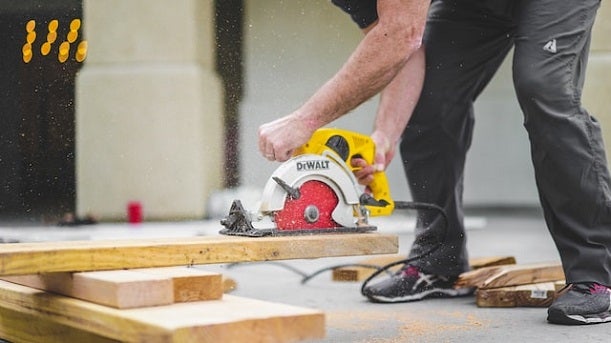Main Street USA
Published 4:30 pm Thursday, August 26, 2010
There is a lot of talk about Main Street USA these days. President Obama says he wants to help Main Street USA through his efforts to recover the American economy and Main Streets all across the USA are challenged like never before.
The struggles faced by Main Street USA are not new. Main Street businesses feel like they are under siege and the attacks come from many fronts. Certainly, federal issues such as tax policies, free trade agreements, minimum wage, banking regulations, health care, energy policies have had their impact; some would say mostly negative. But, there are also a host of free market changes that have impacted Main Street USA from Wal Mart and the big-box revolution to suburbia and the proliferation of shopping malls and strip centers. A less loyal set of consumers coupled with a high degree of mobility as well as the phenomenal growth in internet trade have also contributed to Main Street woes. Add to all that what the pundits now call the Great Recession and it is not hard to see why Main Street USA is suffering.
On the other hand, there are a number of things that bode well for Main Street USA. Entrepreneurship is still alive and well, although some would say many new policies coming out of Washington, DC, these days are driving entrepreneurs out of the marketplace. Nonetheless, high unemployment rates always cause a number of people to pursue that business dream they have always had. And, while high vacancy rates on Main Streets don't do much for business right now, they do represent opportunity and more affordable places to locate new businesses.
Fortunately for Main Street USA, Americans are a nostalgic lot and they are longing for the hometown feel that takes them back to a more idyllic time. We love our history and nothing conveys that like a thriving historic downtown area. The United States has a robust federal policy to preserve our history in the National Historic Preservation Act. In the United States, we use the free market system to preserve history by granting very generous tax credits to real estate owners who preserve and redevelop historic commercial properties to rigorous historic standards. Called “adaptive reuse,” downtowns across the USA are seeing historic buildings converted to indoor shopping malls, micro-breweries, restaurants, retail outlets, office space, and even apartment complexes.
In conjunction with historic preservation, there is a national Main Street Program that seeks to facilitate the preservation and re-invigoration of historic downtown areas across the country. In addition to physical improvements to store fronts and thematic preservation of history, the Main Street Program gives downtown associations and chambers of commerce the tools to create a thriving retail atmosphere. Store hours are adjusted to meet the needs of today's two-income families, pedestrian friendly streetscapes enhance the visitor experience, events make downtown more than a shopping destination, return policies are changed to match the big-box competition, the business mix has changed so as to not compete directly with the chain-discount stores, and excellence in personal service and product expertise helps downtown compete with the internet.
What makes Main Street USA work is not a federal stimulus program, not another pork-barrel project brought to you by your local Congressperson, and not more government interference in the free enterprise economy. No, what makes Main Street USA work is less government, streamlined regulations, lower taxes, especially the capital gains tax rate. And, Main Street needs a National Historic Preservation program that recognizes the requirements of today's developers and new businesses and more cooperation that allows historic preservation to be profitable. Most of all, what Main Street USA needs is government at all levels to see that what is good for business is good for all, that government/private-sector cooperation is what causes the economic tide to come in and float all the ships, big and small, a little higher.
Farmville, Virginia, is a text book example of how Main Street USA and the United States economy will grow strong once again. It will not be through government programs, but by Americans pulling ourselves up by the boot straps. There has been a lot of talk in Farmville in recent months about the high vacancy rates, declining condition of the store fronts, and lack of downtown visitors.
At first the discussion seemed to focus on the Town of Farmville and their parking meter policies. This local issue is a lot like a microcosm of our national economy. While it is true that the parking policies are not the cause of downtown Farmville's woes, the parking meters are not helping the historic area recover. At the national level, while President Obama did not cause the Great Recession, his proposed policies such as nationalized health care, carbon emissions cap and trade, and higher taxes on the Americans who invest in Main Street USA have severely impaired the ability of America to pull itself out of this economic slump.
In Farmville, the Town Council immediately took to heart the notion that their parking policies may be hurting the historic downtown, but they were not willing to shoulder the whole burden. They wisely engaged the downtown business owners, the chamber of commerce, the two local college communities, and other interested parties. The Town Council appointed two council members to be part of a newly formed, non-governmental committee to address the revitalization of downtown. At a recent inaugural meeting of the new downtown group, ideas were thrown out faster than lightning bolts in a late summer thunderstorm. The excitement was contagious and the enthusiasm to undertake a thorough and comprehensive assessment of all of the possible actions has caused some long-time downtown observers to conclude that this effort will be successful.
In my varied career as a bank loan officer, a congressional staffer, and the director of a chamber of commerce, I have seen time and time again what can happen when a vibrant, highly motivated, unfettered-by-government group can do if the rest of us just step back and get out of the way.
For much of my life, I had a plaque that my mother gave me that read, “Lead, Follow, or Get Out of the Way!” I actually resented that plaque for years because I thought my mother was trying to push me to lead; something I was not ready for or inclined to do at the time. Then it hit me like an epiphany. There are three elements to good leadership-being a good leader, being a good follower, and knowing when to get out of the way. Government, at all levels, can learn a lot and do more good for the country if they would sometimes just get out of the way.
(Paul D. Hoffman is a California native who spent most of his life in Cody, WY. He has been politically active and has spent much of his career in public service at various levels of government and in non-profit organizations. From 2002 to 2008, he was a Deputy Assistant Secretary at the US Department of the Interior in Washington, DC. He is a resident of Prince Edward. He can be reached at editor@TalkItUpAmerica.com)





